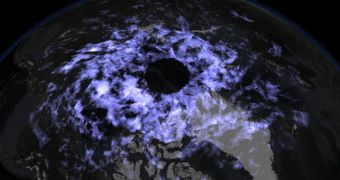A team of experts at the Naval Research Laboratory, led by researcher Michael Stevens, say that the exhaust plumes produced by the NASA space shuttles as they ascended to space went on to travel towards the Arctic at a fast pace, forming noctilucent clouds at this location.
The study, published in the August 27 issue of the Journal of Geophysical Research, covered the July 8, 2011 launch of the NASA space shuttle Atlantis on its STS-135 mission. Several sensors suites were used to track the exhausts, and identify their trajectory.
Within 21 hours of the launch, the vast majority of the chemical residues arrived above the Arctic and gathered in a layer of the atmosphere called the mesosphere and lower thermosphere (MLT), where they formed high-altitude, night-shining clouds.
Scientists say that these conclusions will help them improve models that simulate the flow of air through the upper atmosphere.

 14 DAY TRIAL //
14 DAY TRIAL //